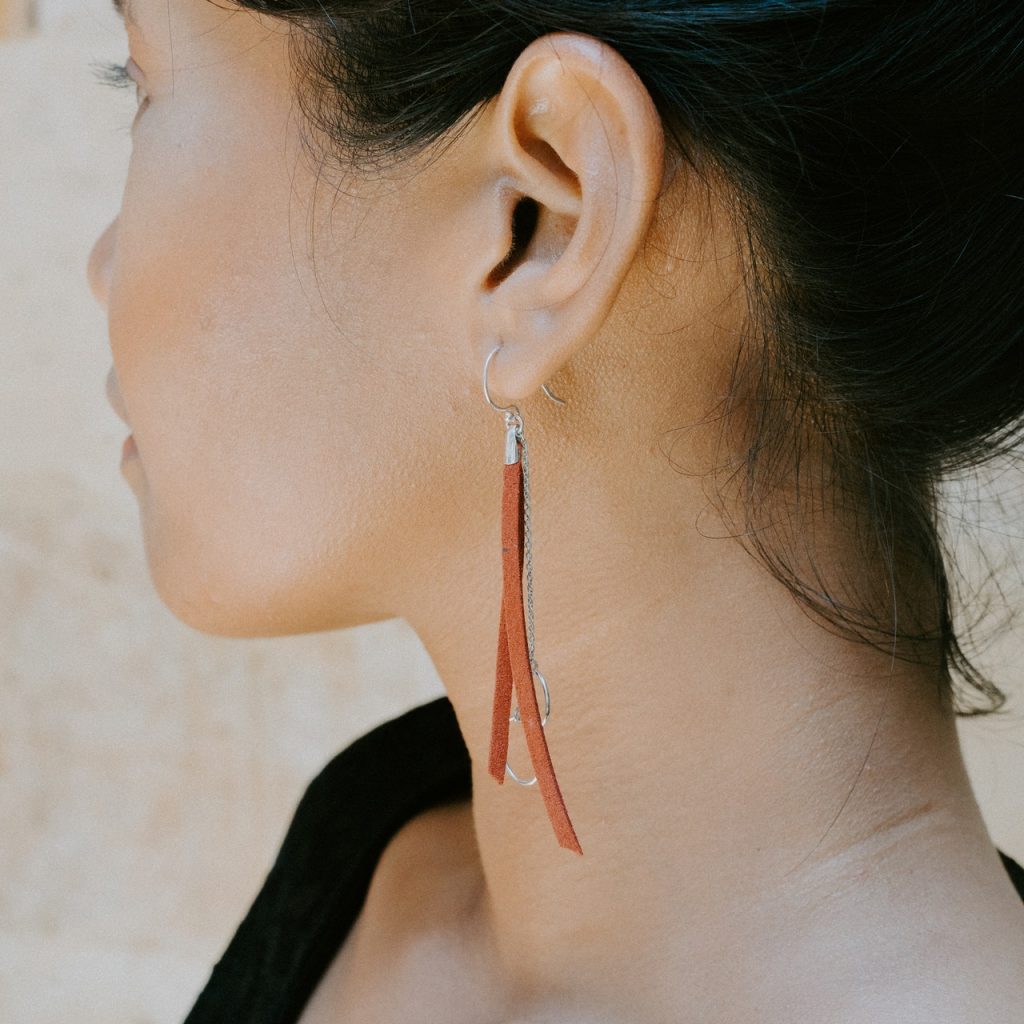Ear Reconstruction
Home Facial Reconstruction Ear Reconstruction
Ear Reconstruction in Orange County, CA
Ear reconstruction surgery aims to correct birth anomalies of the ear or to rebuild the ear after tissue loss due to injury or illness. The reconstructive surgery creates or modifies the external structure of the ear, which improves appearance and can help a child’s or adult’s self-esteem and self-confidence.
The surgery can help with hearing if there is an obstruction at the opening to the ear, but that is not its primary objective. An otologist can separately address problems with the ear’s inner structure or with hearing.
The doctors at UCI Plastic Surgery are leaders in the field of cosmetic and reconstructive surgery, with special expertise in treating children and handling challenging repairs in adults after injury or illness. Through their teaching and lecturing roles at UCI, they stay current with state-of-the-art techniques and technology. With their advanced technical skills, they consistently produce better, more natural-looking results for patients of all ages.

To learn more about ear reconstruction in Los Angeles, contact UCI Plastic Surgery to schedule a consultation at one of our five locations: in Orange, Costa Mesa, Tustin, Newport, and Yorba Linda, CA.
What Is Ear Reconstruction Surgery?
Ear reconstruction is the broad term for all surgical procedures used to correct ear deformities, including the following.
- Microtia repair: Surgery to repair an ear that is underdeveloped or missing at birth.
- Otoplasty: Surgery to repair misshapen or protruding ears.
- Partial ear reconstruction: Surgery to restore portions of the external ear that are missing after traumatic injury, such as a dog bite, car accident, or cancer.
What Problems Can Ear Reconstruction Surgery Correct?
Missing or Underdeveloped Ears (Microtia)
Ear reconstruction can correct ears that are underdeveloped at birth, as is the case in children with microtia. Microtia occurs in about one in every 6,000 to 8,000 births, so the condition is uncommon, but not rare. Microtia spans a spectrum of ear anomalies from having no ear at all (called anotia) to having an ear with only small abnormalities. Microtia most often occurs in only one ear, but can affect both ears.
Microtia can occur as part of a syndrome that requires additional treatment, such as craniofacial reconstruction.
In microtia, an underdeveloped or missing ear canal and eardrum may accompany anomalies in the structure and appearance of the external ear, affecting a child’s hearing. Ear reconstruction does not correct problems with the inner ear’s function. Coordinated treatment by an otologist may help correct hearing problems.
Misshapen or Protruding Ears
Cosmetic ear surgery, or otoplasty, can correct the appearance of protruding or misshapen ears. For children and adults with protruding ears, the surgery reduces the ears’ projection, pulling them in closer to the head. The surgery can reshape misshapen ears to a more attractive appearance. Surgery to correct misshapen or protruding ears can also make the two ears match more closely in appearance and position.
Injured or Damaged Ears
When an injury or cancer damages the external ear, ear reconstruction can restore a normal appearance. Traumatic injuries that can damage the external ear include car accidents, burns, severe cuts or lacerations, gunshot wounds, and animal bites. People who have cancer may also lose portions of their ears, either from surgical removal of cancerous tissue or tumors or because of radiation therapy. Ear reconstruction surgery rebuilds the missing portions of the ear.
Start Your Journey Today!
Lorem ipsum dolor sit amet, consectetur adipiscing elit. Ut elit tellus, luctus nec ullamcorper mattis, pulvinar dapibus leo.Lorem ipsum dolor sit amet, consectetur adipiscing elit. Ut elit tellus, luctus nec ullamcorper mattis, pulvinar dapibus leo.Lorem ipsum dolor sit amet, consectetur adipiscing elit. Ut elit tellus, luctus nec ullamcorper mattis, pulvinar dapibus leo.Lorem ipsum dolor sit amet, consectetur adipiscing elit. Ut elit tellus, luctus nec ullamcorper mattis, pulvinar dapibus leo.
What Does Ear Reconstruction Entail?
Ear reconstruction surgery takes place while the patient is under either general anesthesia or local anesthesia with sedation. The procedure’s specific steps will depend on the desired correction.
When an ear is underdeveloped or missing or needs significant reshaping or repair, surgeons use three primary approaches to rebuild it.
- Medpor ear reconstruction uses a synthetic implant made from porous polyethylene to create the ear’s missing framework. The surgeon covers the new ear structure with tissue and skin grafted from the scalp, ear, or another part of the body. The Medpor material has the firmness and flexibility of the ear’s natural cartilage. The implant consists of two pieces customized to create an ear close to the size and form of a natural ear, matching the patient’s opposite ear as closely as possible. The results of Medpor ear reconstruction can be very natural-looking.
When performing ear reconstruction on children, surgeons account for future growth. We can perform Medpor ear reconstruction on children as young as age 5 – though we prefer to wait until at least age 8 – but the artificial implant will not grow along with the child. Because of this, a surgeon will reconstruct the ear to its projected adult size.
- Ear reconstruction using rib cartilage involves no artificial materials, so we call it autologous reconstruction. The surgeon begins by carefully removing cartilage from the patient’s ribs, then cutting and shaping it into the form of the reconstructed ear. Then, they place the cartilage framework under the skin to approximate a normal appearance. Depending on the desired change, the surgeon may take additional steps to improve the results. To sharpen the definition of the new ear, a surgeon might place suction catheters under the skin to hold it close to the new cartilage framework during initial healing.
In the initial stage of autologous ear reconstruction, a surgeon will typically position the ear against the head using rib cartilage to hold the new ear in place. A second procedure will be necessary to shift the ear out into a more natural-looking position.
Surgeons typically perform ear reconstruction using rib cartilage on children between the ages of 8 and 10, when the ribs have developed enough to provide sufficient cartilage. At this age, the patient’s opposite ear is close to its adult size, and an experienced surgeon will build the reconstructed ear to match it as closely as possible.
- Ear prosthetics are artificial ears, held in position with adhesives or implanted into the bone. This approach is better suited to replace damaged adult ears, as the prosthetics are costly and require care to avoid harm.
Surgery to change the projection of protruding ears is called setback otoplasty. The surgeon makes an incision behind the ears and reshapes cartilage to hold the ear closer to the head.
What to Expect in Recovery
When you or your child are medically stable to go home, the staff at UCI Plastic Surgery will provide specific instructions for recovery, including guidance on how to care for dressings, manage pain, and bathe. You can expect some mild discomfort at first, as well as difficulty sleeping if you are used to sleeping on your side. You may need to wear a headband for the first two weeks to hold the ear in place as it heals.
Your doctor will schedule follow-up appointments to track your or your child’s progress in healing and will be available to respond to your questions.

Learn More About Ear Reconstruction in Orange County
Contact UCI Plastic Surgery today to schedule a consultation and find out how surgical ear reconstruction restores normal appearance when your child is born with an underdeveloped or malformed ear, or when illness or injury damages an ear. We’ll answer your questions and explain the surgical approach we recommend, based on your or your child’s unique needs. We have five Los Angeles-area offices: in Orange, Costa Mesa, Tustin, Newport, and Yorba Linda, CA.
 UCI Plastic Surgery
UCI Plastic Surgery